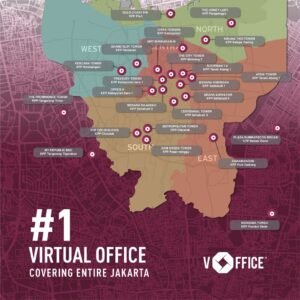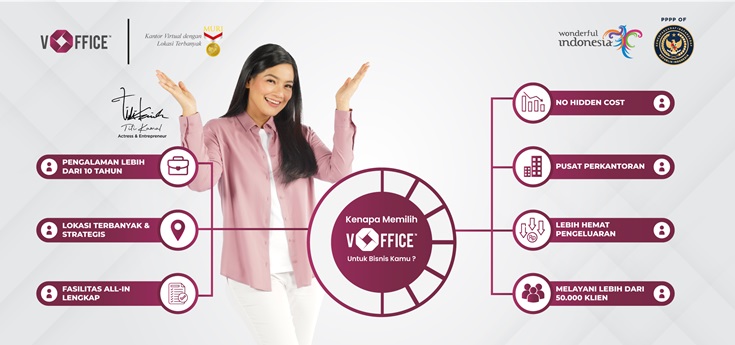Limited Liability Company (PT) is a business entity with high appeal in Indonesia. This business unit is divided into two types, namely open and closed PT. So, what are the differences between open and closed companies? To find the answers, let’s explore the explanation about the differences between open and closed PT below.
Read Also: Understanding PT (Limited Liability Company), Types, and Advantages
Understanding Open and Closed PT
Open and closed PT have similar definitions. Both are legal entities where the capital comes from a partnership of shares. The establishment of PT itself is based on an agreement agreed upon by all parties.
PT must carry out business activities with capital divided into a number of shares. Moreover, it must also comply with the requirements set out in Law No. 40 of 2007 concerning Limited Liability Companies (Company Law).
Read Also: Check This Out! Tips for Choosing a Company Name for Your PT
Although the meaning is the same, open and closed PT are still different. Open PT, also known as Public Companies, is required to offer shares to the public in accordance with regulations on the capital market. Simply put, Open PT can sell its shares to the public through the capital market.
So, open PT not only has to comply with the regulations in the Job Creation Law and Company Law but also has to follow the regulations in Law No. 8 of 1995 concerning the Capital Market. Some examples of open PT are Indofood Sukses Makmur Tbk, Astra International Tbk, PT Bank Central Asia Tbk, and many more.
Read Also: Latest Requirements for Establishing a Personal PT
On the other hand, closed PT does not engage in buying and selling shares to the public. Generally, the capital comes from specific groups, such as family, relatives, friends, and so on.
Considering that closed PT does not offer shares, it is only subject to the regulations in the Job Creation Law and Company Law. Some closed companies include PT Djarum, PT PLN, PT Pertamina, and many more.
The obligation to offer shares to the public requires open PT to register its shares on the Indonesia Stock Exchange (IDX). Of course, this does not apply to closed PT.
Read Also: Complete Guide to Creating a PT Online, Easy and Fast!
Differences Between Open and Closed PT
To better understand the differences between open and closed companies, consider the following points.
Number of Shareholders
Both open and closed PT have criteria regarding the number of shareholders and the paid-up capital. For open PT, the minimum number of shareholders is 300 people.
In addition, the minimum amount of paid-up capital in open PT is Rp3 billion or according to the amount agreed upon by all shareholders. Meanwhile, the minimum number of shareholders for closed PT is two people, with a minimum paid-up capital of Rp50 million.
Read Also: Differences Between Individual PT and CV Every Prospective Entrepreneur Must Know
Location of General Meeting of Shareholders (RUPS)
Open PT can hold RUPS in three locations. The first is where the company conducts its operational activities. The second is at the company’s registered office. The third is at the stock exchange where PT registers its shares.
Meanwhile, closed PT can hold RUPS at the company’s registered office. It can also be held at the location where PT conducts its business activities. Regulations regarding the location of RUPS are further regulated in Company Law Article 76.
Read Also: What is TDP (Company Registration Certificate)?
Calling of RUPS
Differences between open and closed PT can also be seen in the notice period for calling RUPS. Closed PT must issue a notice at least 14 days before the RUPS date. This notice can be made through registered mail or newspaper advertisements.
For open PT, the company must announce in advance before making the call. This is in accordance with the provisions in Company Law Article 83. Open PT must announce to all shareholders 14 days before the RUPS call.
Meanwhile, the RUPS call must be made no later than 21 days before the RUPS date. Open PT can make the RUPS call through:
- One national newspaper in Indonesian
- Stock exchange website
- The company’s website in Indonesian and a foreign language, at least in English.
Also read: Difference between Publicly Listed and Private Limited Companies
RUPS Leader
Closed PT does not have a provision on who should lead the General Meeting of Shareholders. This is different from open PT, which must be led by one of the Board of Commissioners members. This member is predetermined by the Board of Commissioners.
The RUPS of open PT can be led by one of the Board of Directors members if all members of the Board of Commissioners cannot attend. If both the Board of Commissioners and the Board of Directors cannot attend, the RUPS can be led by one of the shareholders.
The shareholder who leads the meeting must be present at the RUPS and appointed by all participants in the meeting. Open PT is also obliged to submit the meeting minutes to the Financial Services Authority (OJK) no later than 30 days after the RUPS is held.
As a note, closed PT can become open PT if its capital and shareholders meet the criteria for open PT. This change in status can be made within 30 days after the company meets the criteria.
That’s the explanation about the differences between open and closed PT and examples of open and closed PT. For those of you planning to establish PT but are constrained by location, you can use virtual office from vOffice. With vOffice, you can run your business more economically, easily, efficiently, and effectively.
vOffice is also available in many major cities, such as Jakarta, Tangerang, Bekasi, Bandung, Surabaya, Medan, and Bali. Interested in establishing PT virtually? vOffice can help with establishing your PT.










